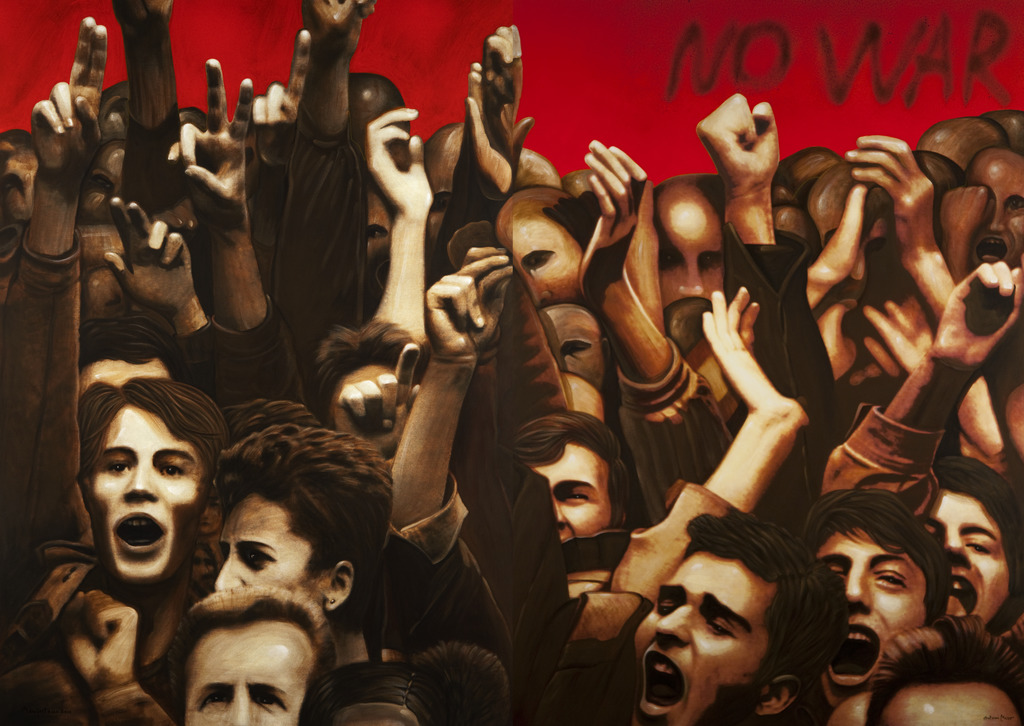The creative non-didacticism: The epic theater of Brecht and the social painting of Antoni Miró
Already, in another reflective space expressed previously, we have put in value the meeting that can be established between these two artists belonging to different disciplines, the literary and the pictorial, although they converge in the specificity of the approach, both aesthetic and conceptual, that manifest both when they establish their creative codes.
Thus, in many of the plays of the German playwright: Mother Courage and her children, The Good Person of Sezuan, Terror and Misery of the Third Reich or the Caucasian Chalk Circle, for example, Brecht breaks with romantic emotion, even with the emotional identification with the characters, leaving aside the Aristotelian bases of place, time and action, to reside the true interest of their proposals in the isolation of each one of their scenes, to consider them as true particular universes, and directing them towards the construction End of the story.
Now, from the artistic perspective of the painter Antoni Miró, we observe an enormous identification, not only of the procedures, but also of the intentions, with the creative bases used by Brecht. And we explain ourselves. The artist Antoni Miró avoids didacticism in his creative works, and in the series that he tackles (always as a communicative strategy), he establishes the global history that he wants to tell us. But in each of its constructive parts, in each painting, there exists that fragment that as an individual joins the intended final narrative. Antoni Miró seeks, with rigor and autonomy, beauty in his compositional proposals. Yes, but with the firm need to inform, and also with the intimate vocation of awakening the consciences of all those who approach their work. And as we said, it is not, therefore, a mellifluous didacticism, or undemanding after a strange operation, certainly now we could talk about the need to remove their own convictions, forcing a reflection on the mechanisms that cause social injustice . What in Brecht was the autonomy of the scenes with respect to the whole of the theatrical work, here, in Antoni Miró, each painting is singular, and argues in favor of an enormously wide worldview as far as temporal space relations are concerned.
And, finally, the themes that both artists, Antoni Miró and Bertolt Brecht, approach in their works, even taking into account the perspective of the times that separate them, but taking into account the needs that the social paradigm illustrates, and despite the discourse that the history grants, they are very close as we can guess: intellectual commitment to their time, the violence of human relationships, the nonsense that warlike confrontations entails, and the situation of man in the fierce sphere of a capitalist society.
Josep Sou
